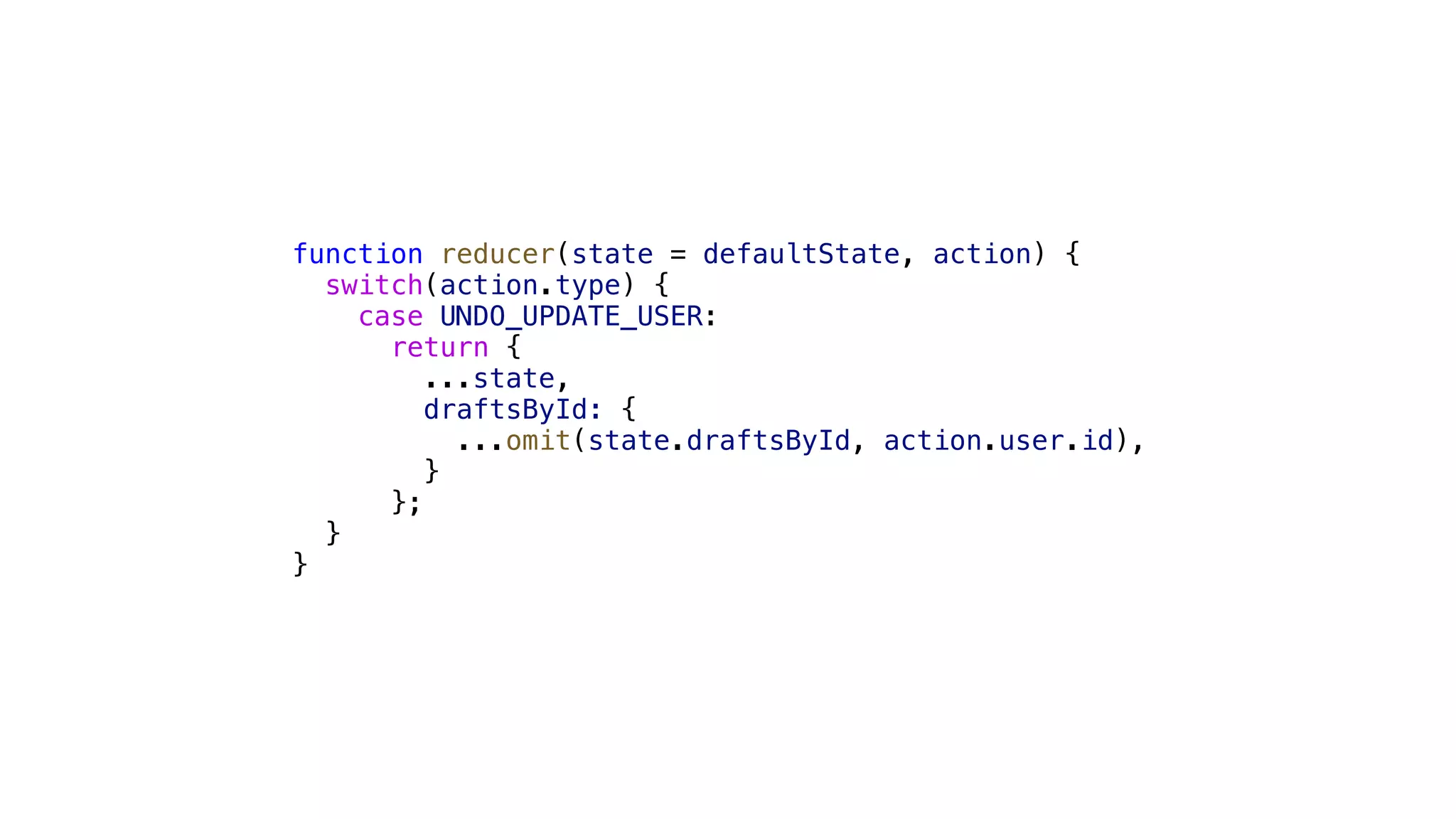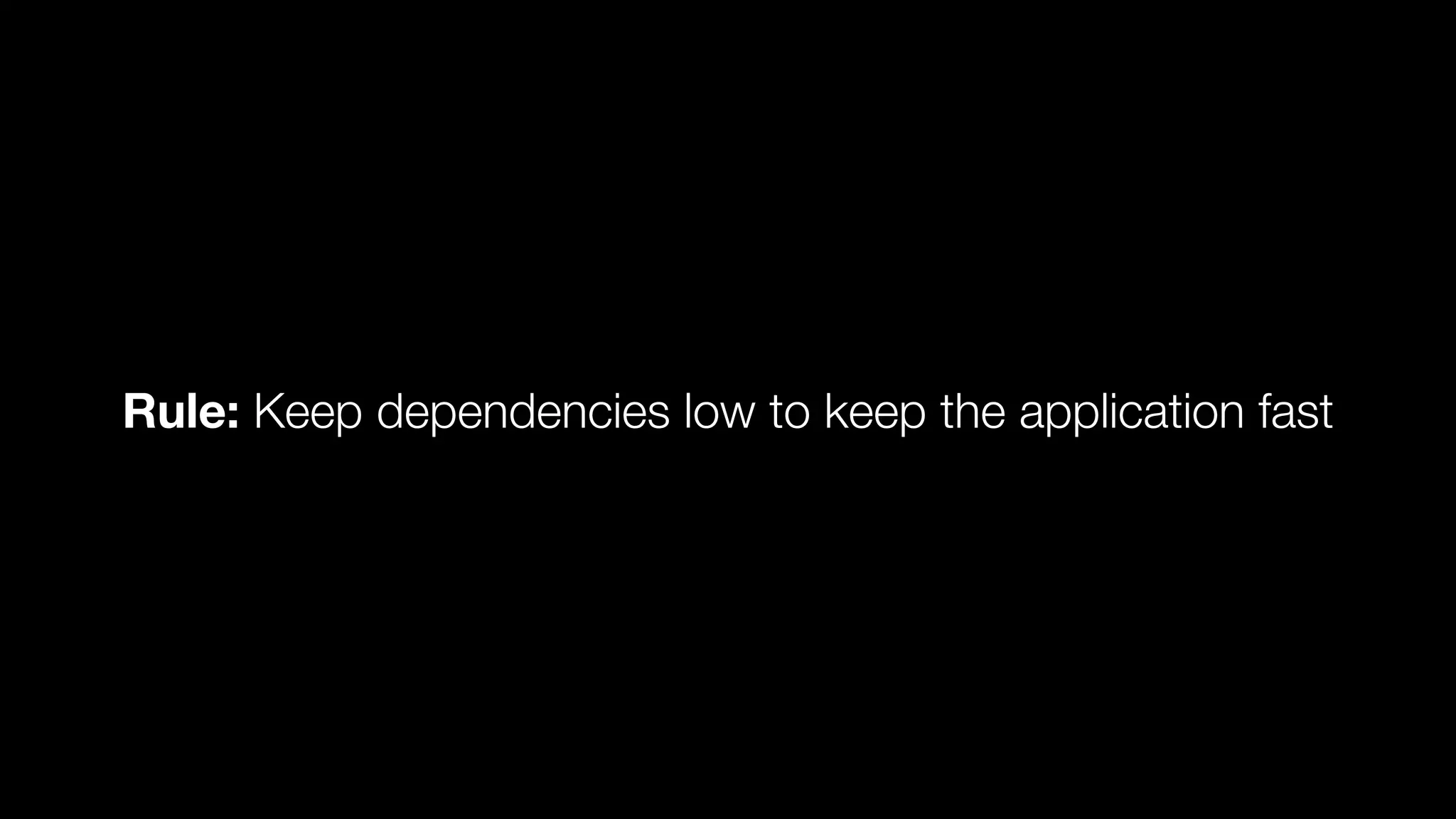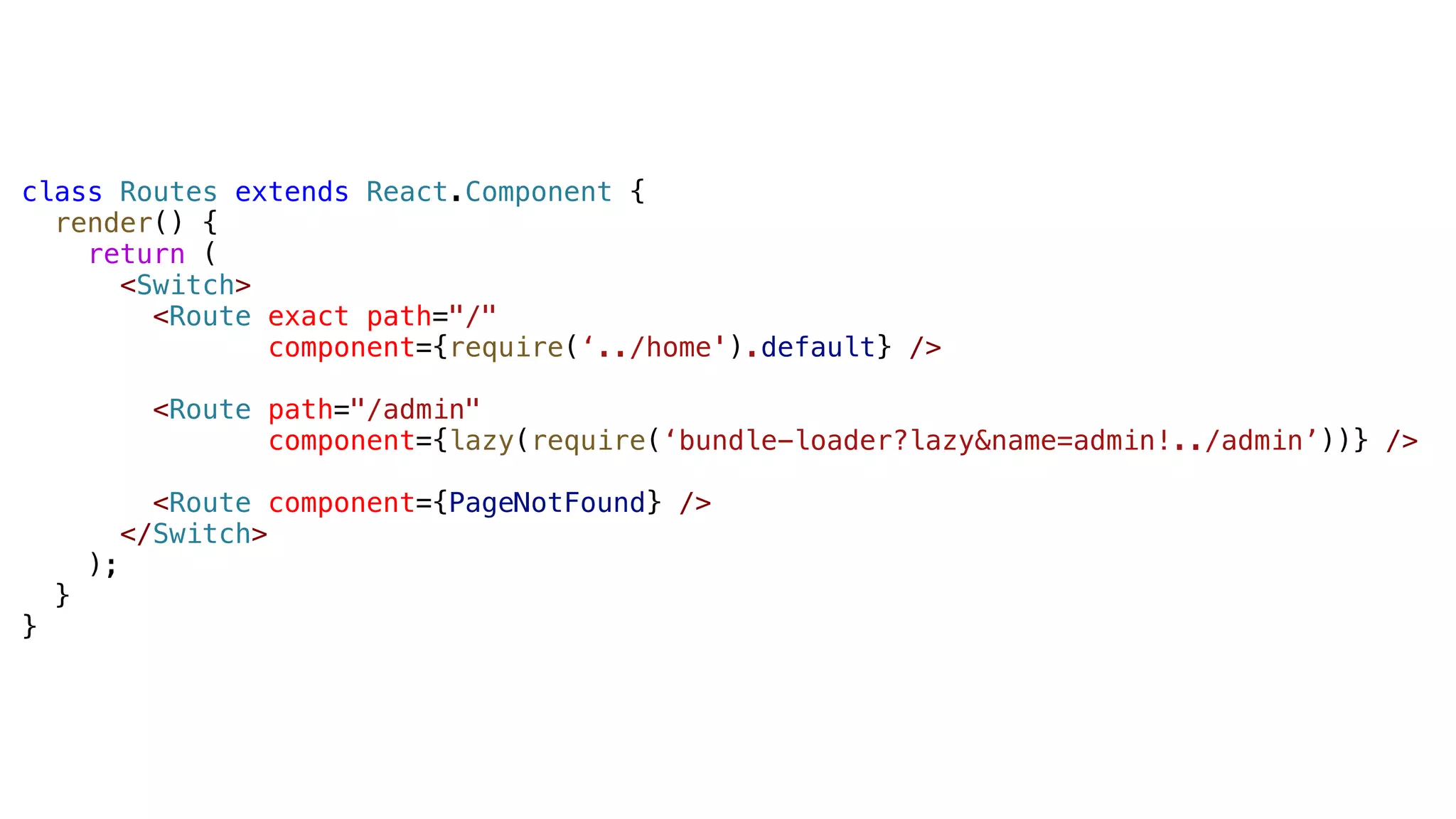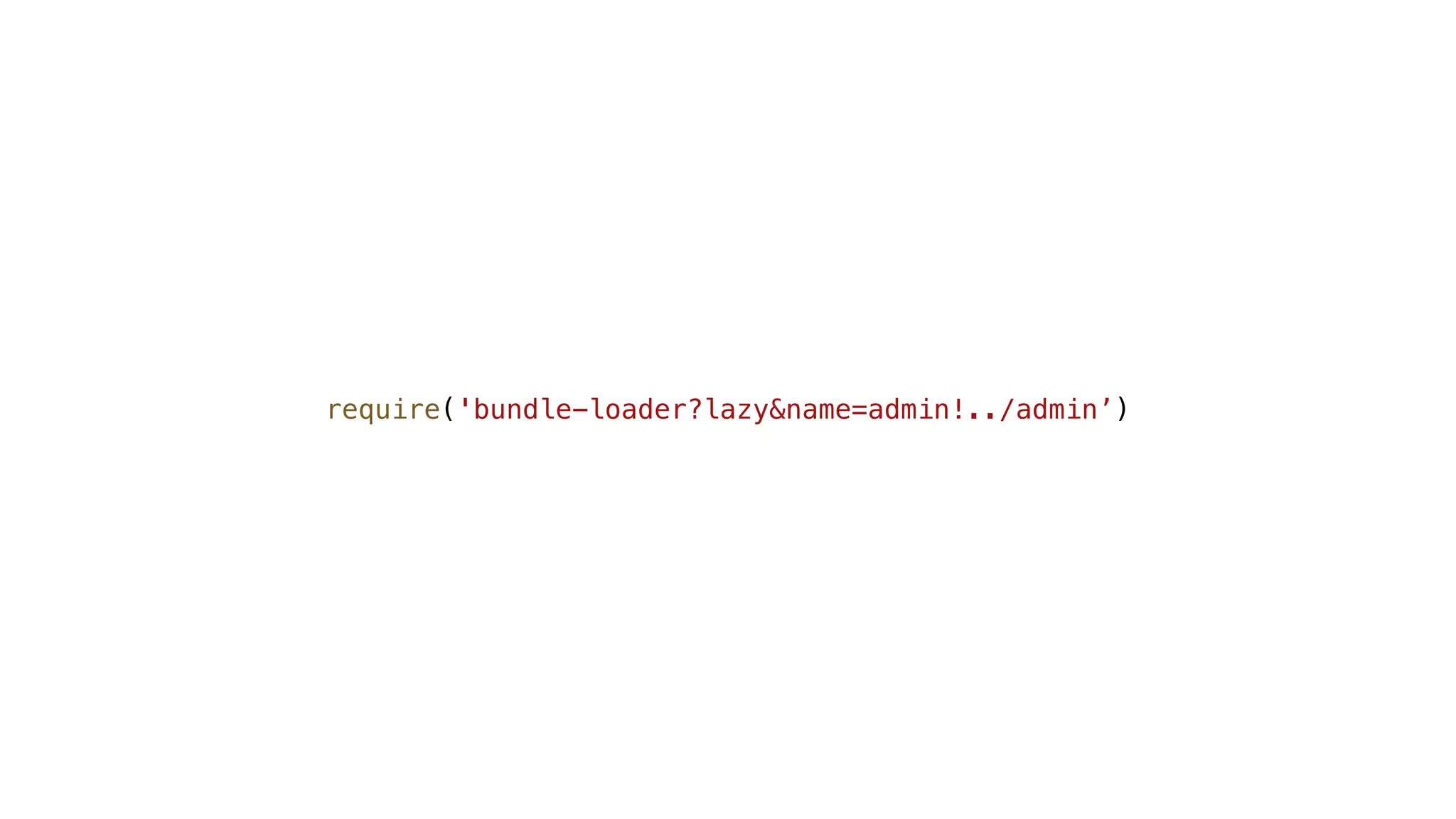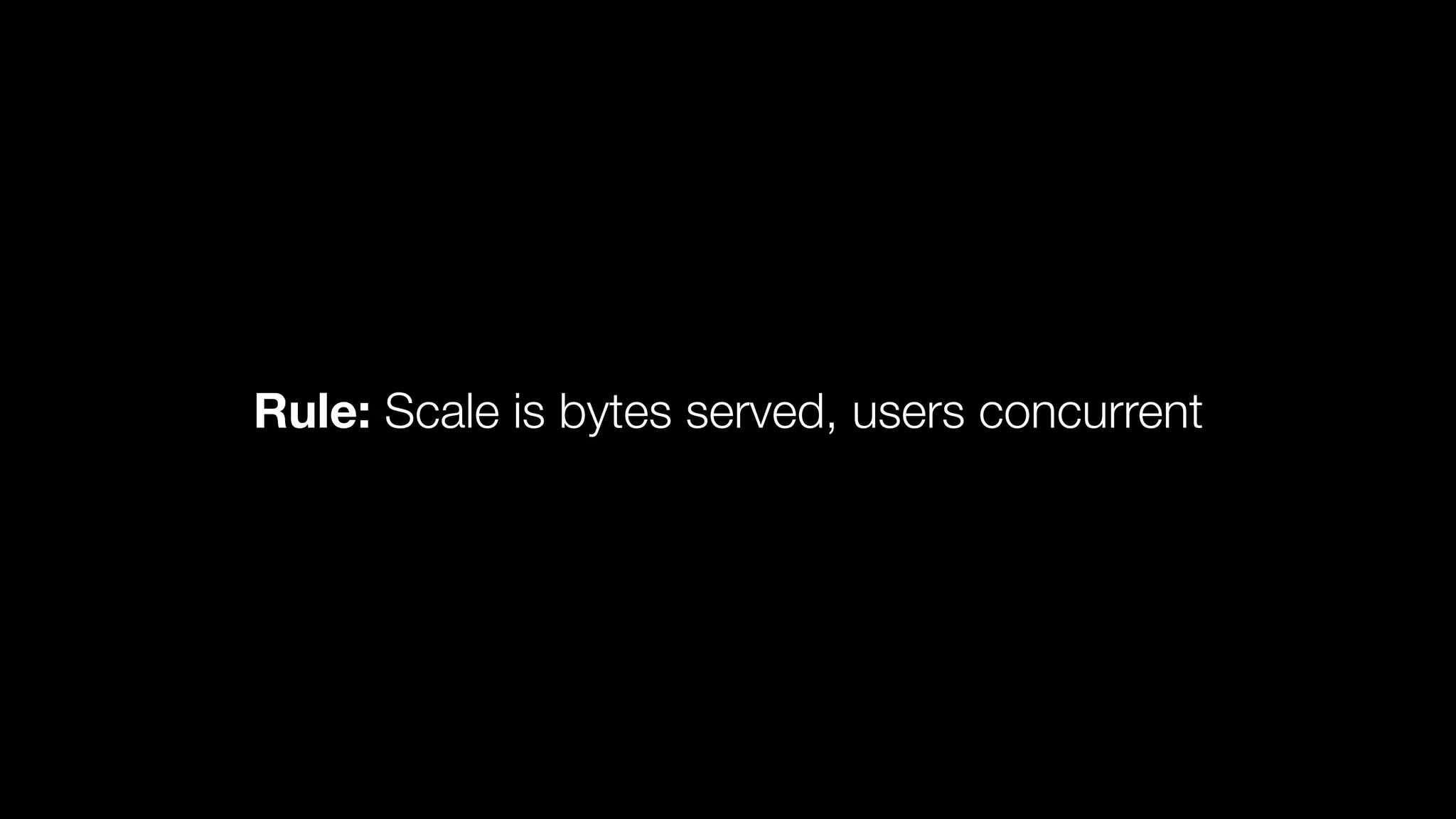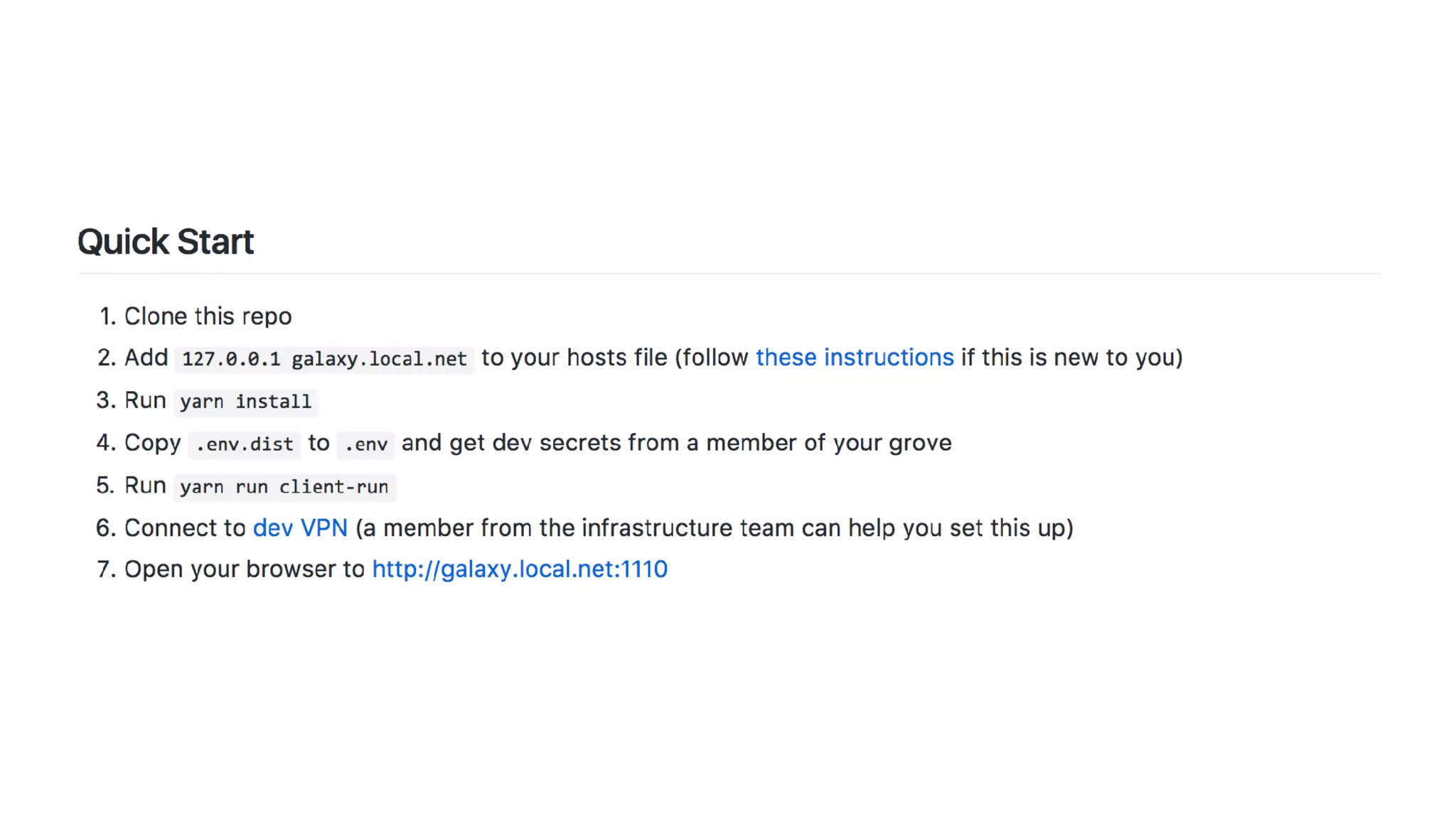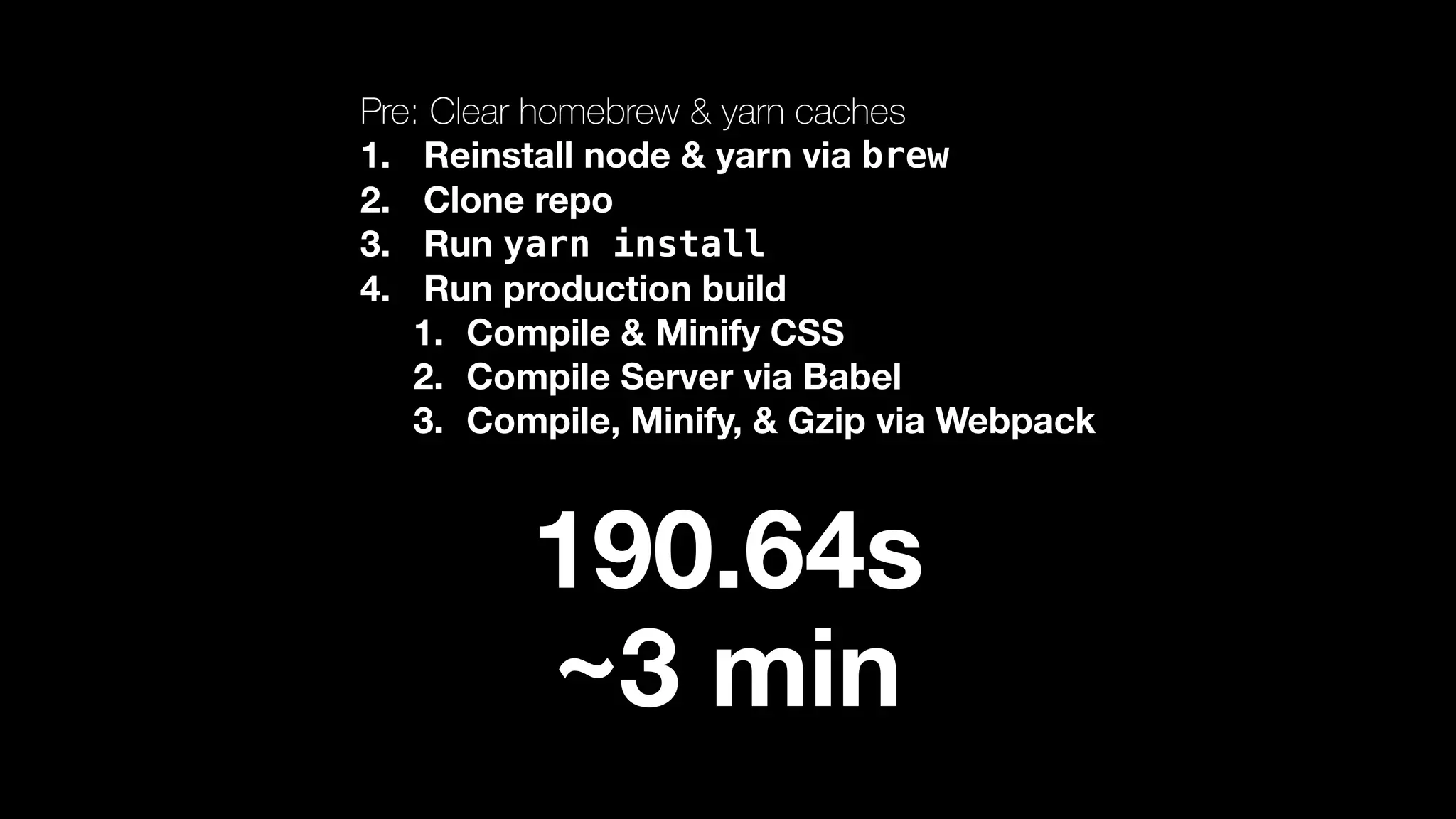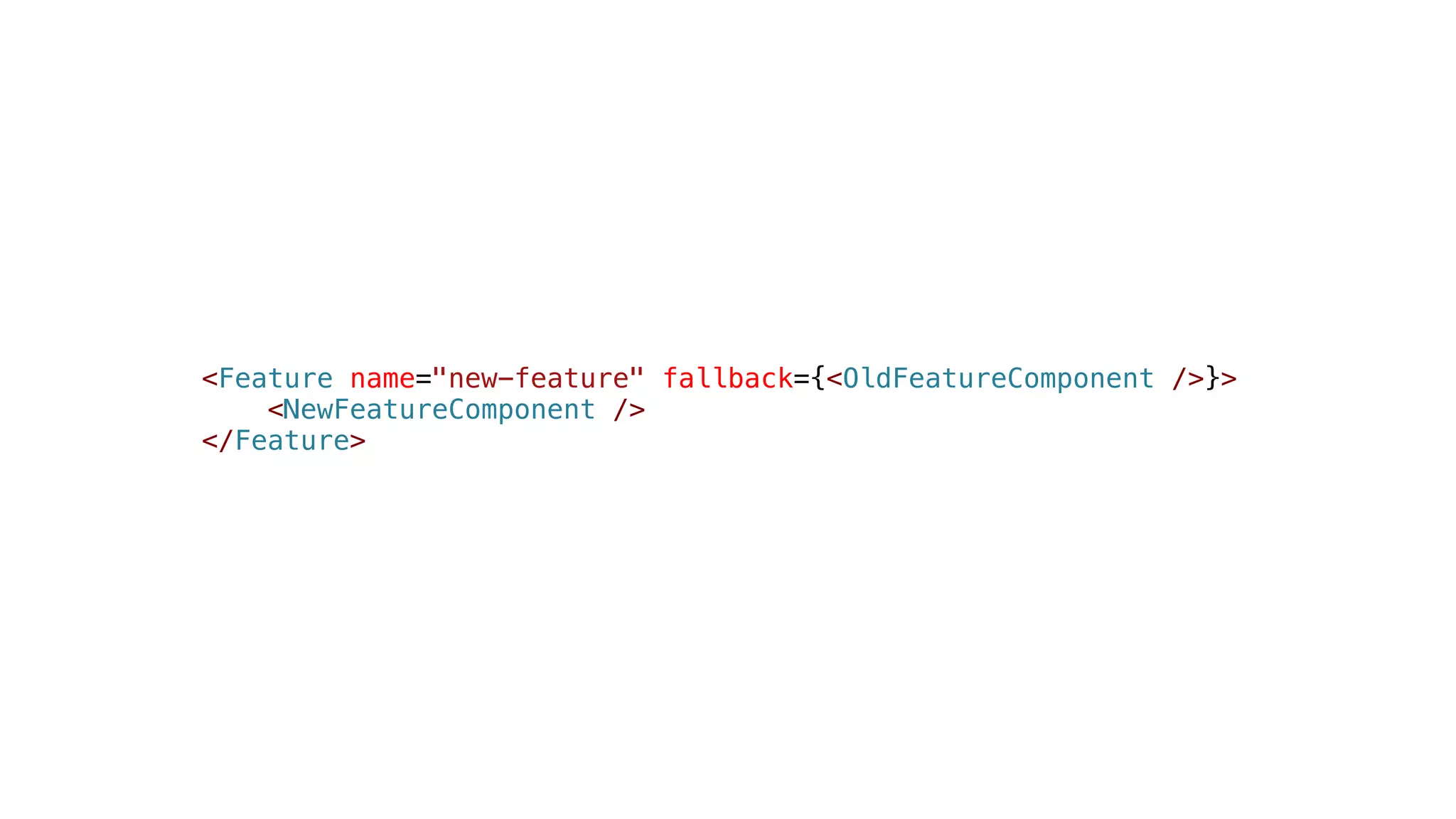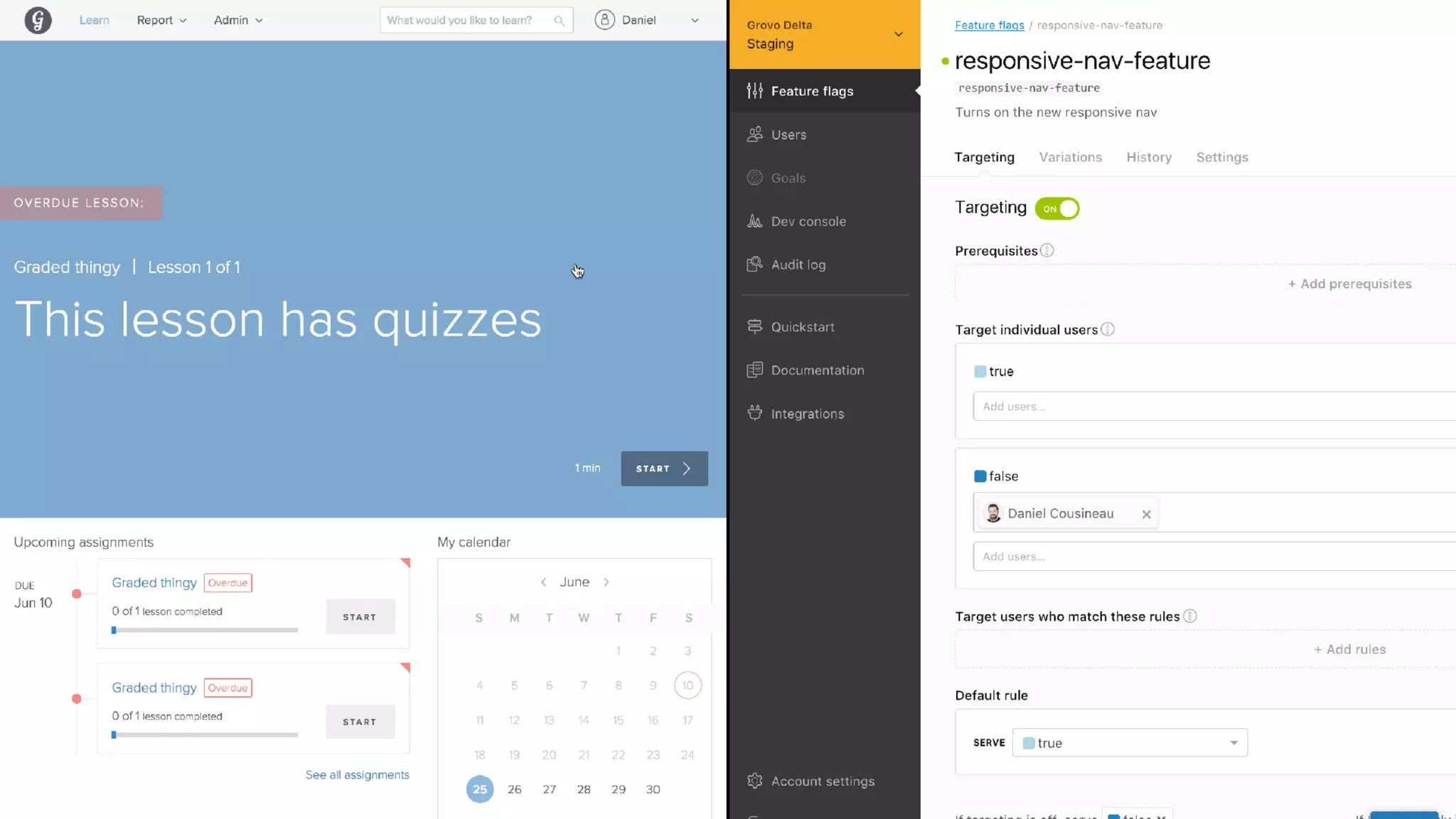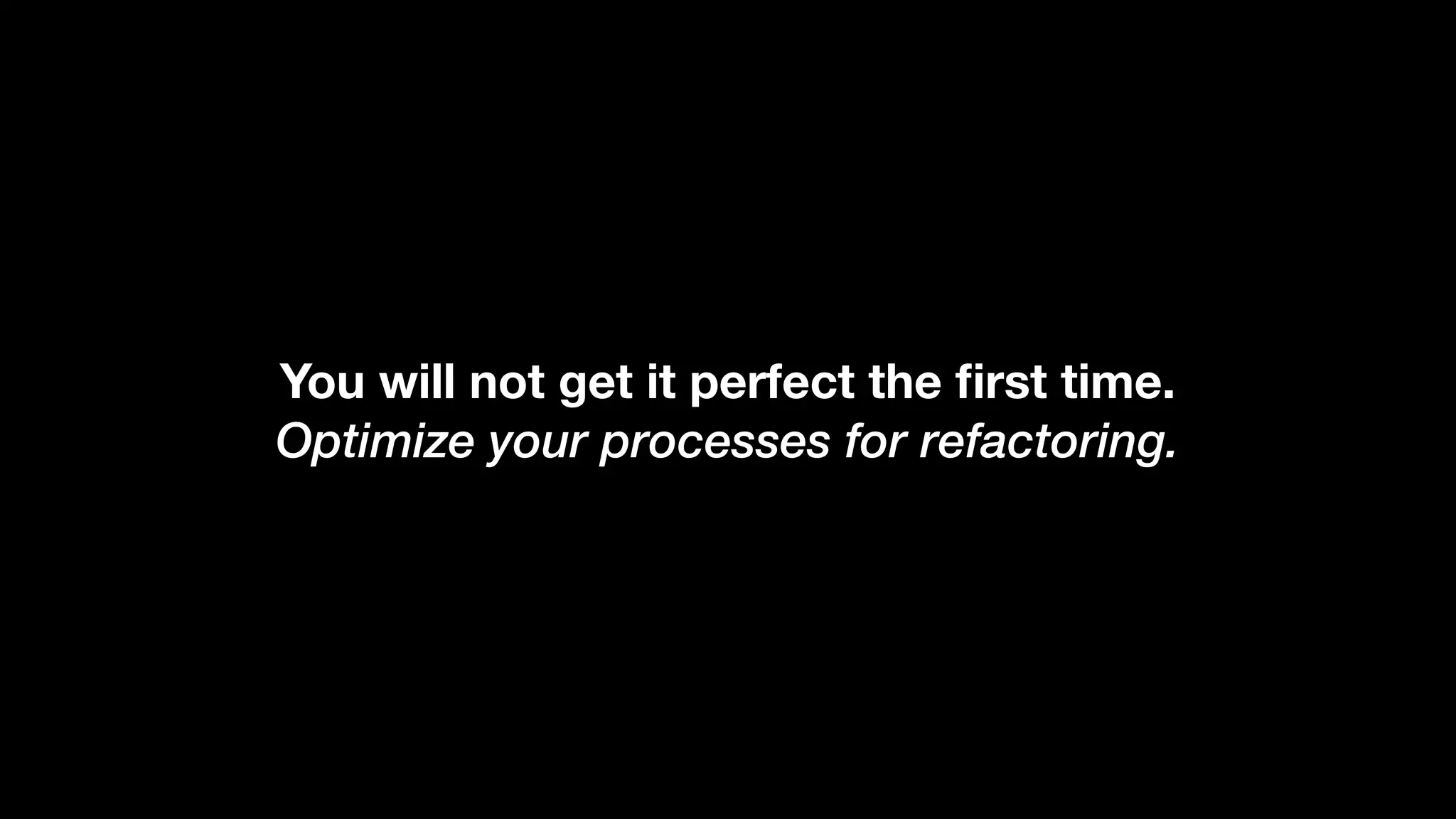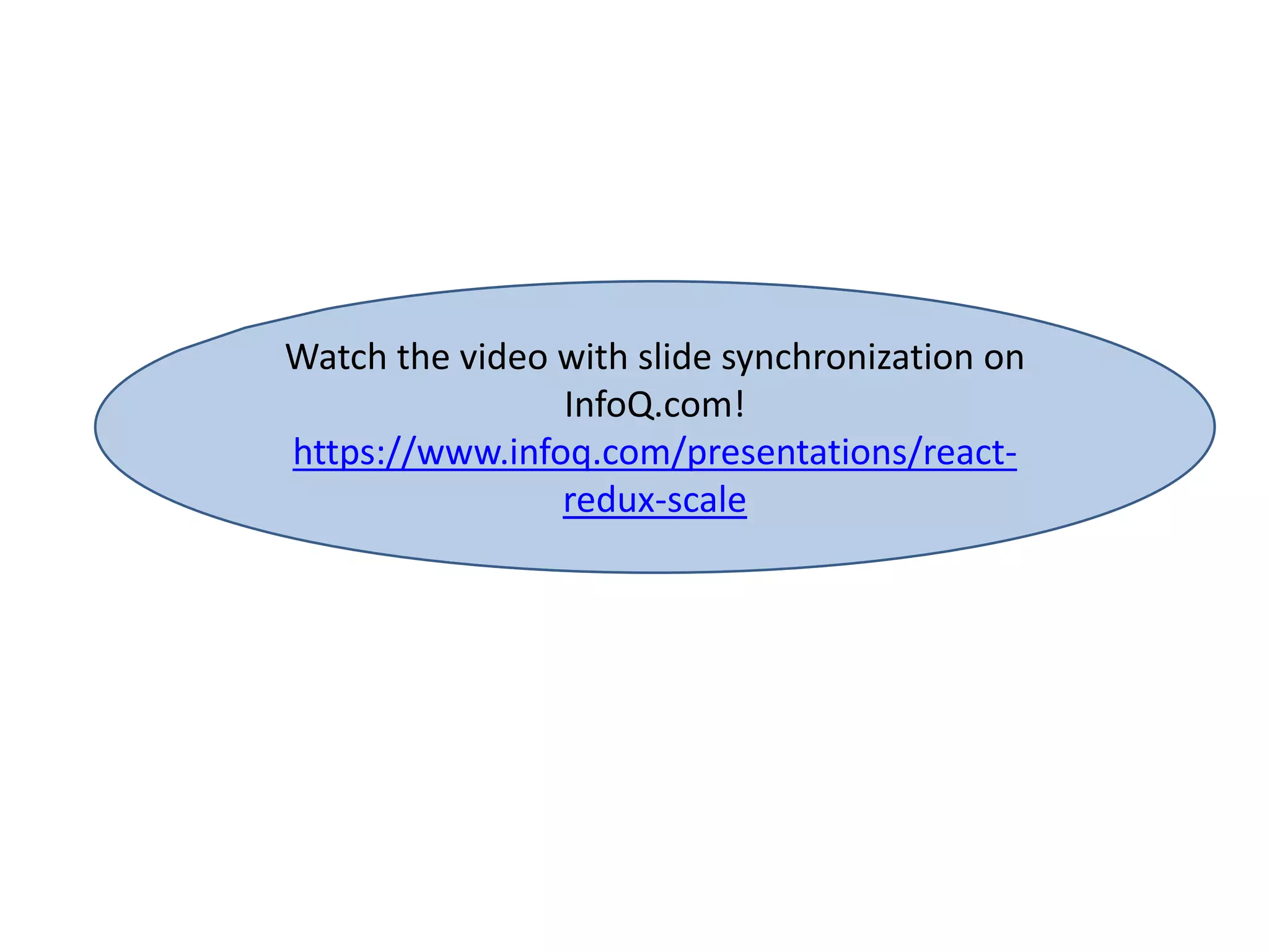The document discusses strategies for scaling React and Redux applications. It begins by outlining some common rules for building React and Redux apps and notes that realities often require breaking those rules. For React, it discusses when state is inevitable and how to properly use context. For Redux, it discusses how side effects can still use callbacks and when normalization is needed to reduce complexity rather than purely for performance. It concludes by emphasizing that scale is about responding to growth and prioritizing deployability and refactoring over strict adherence to rules.






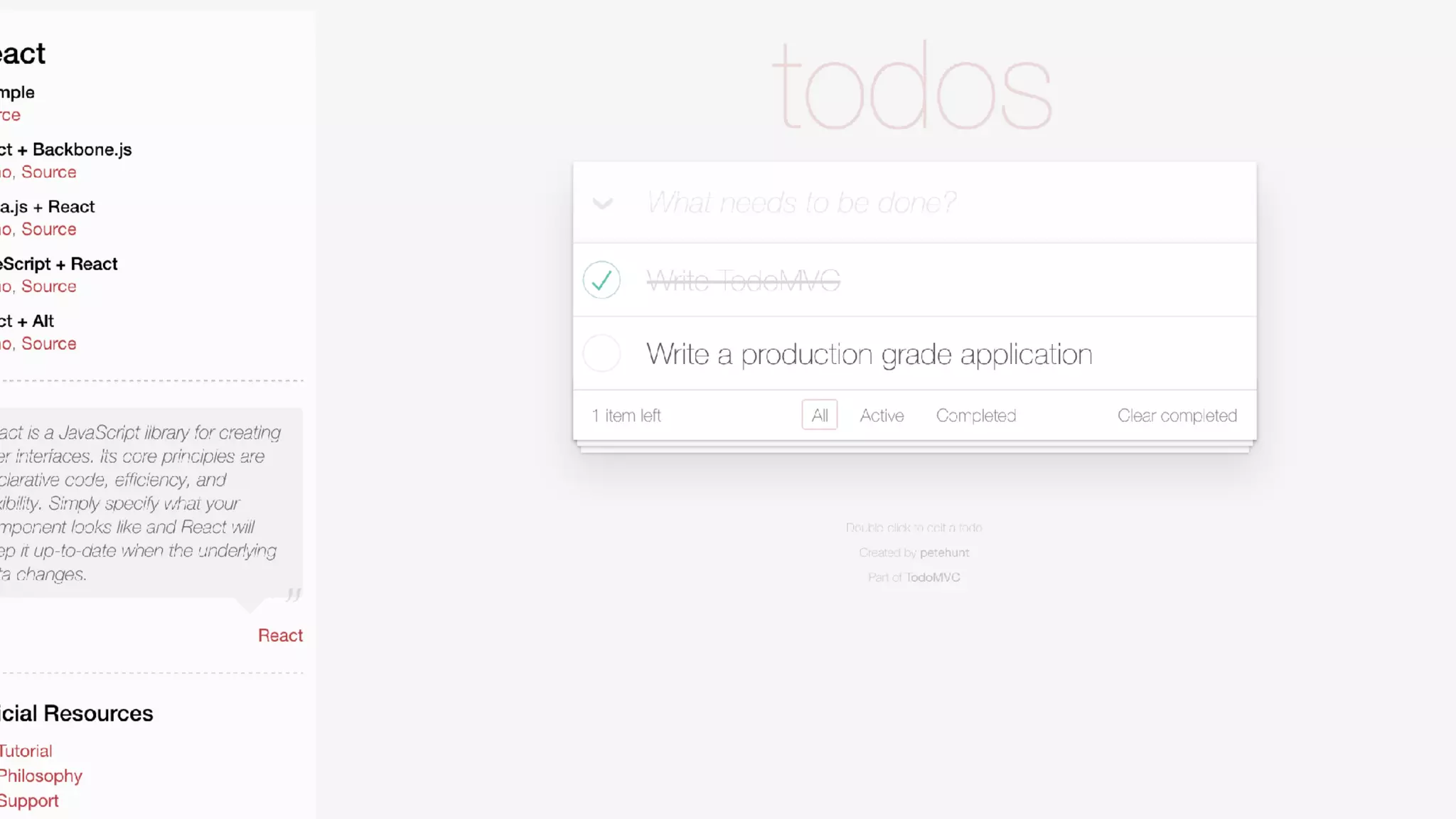






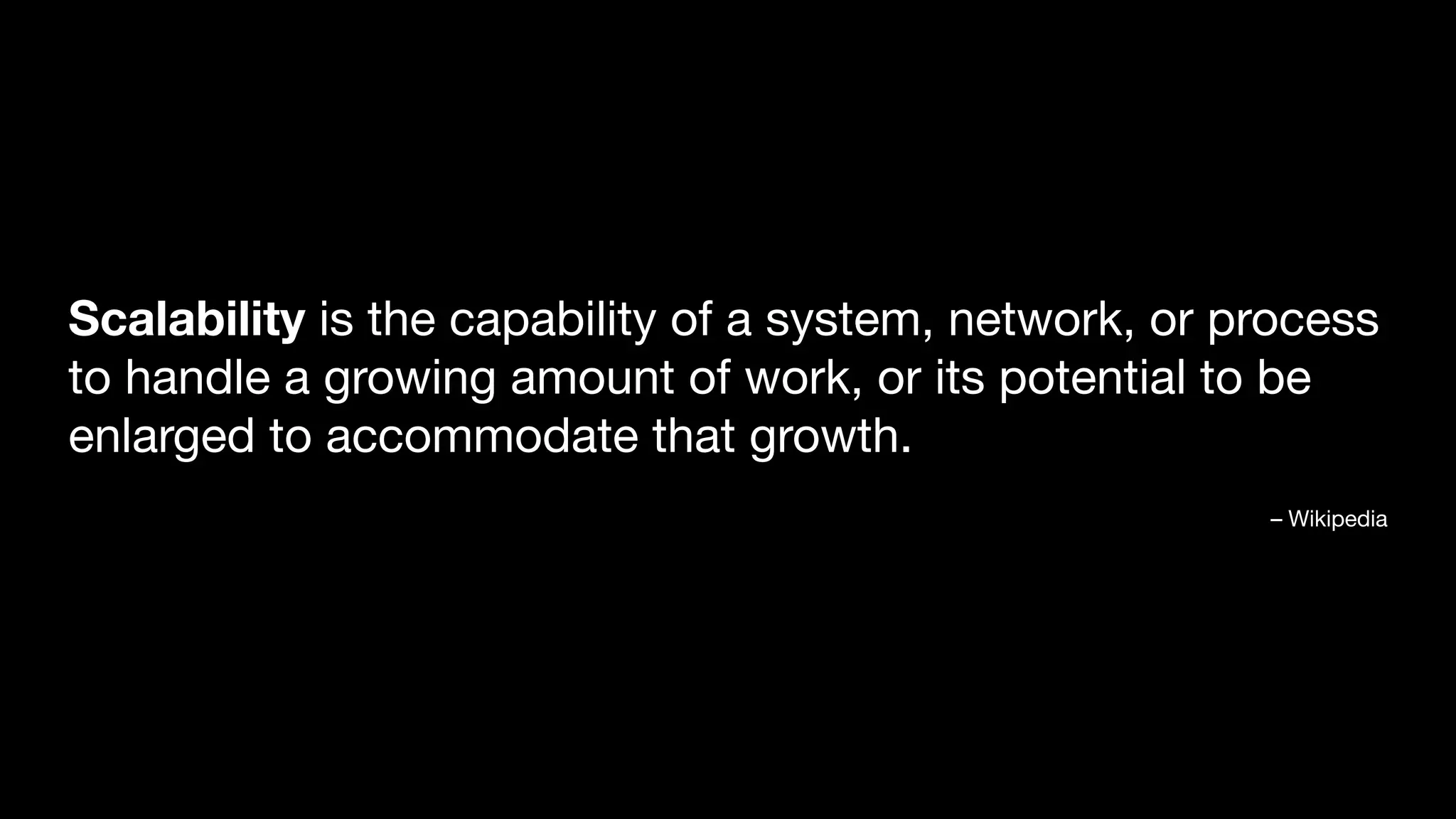



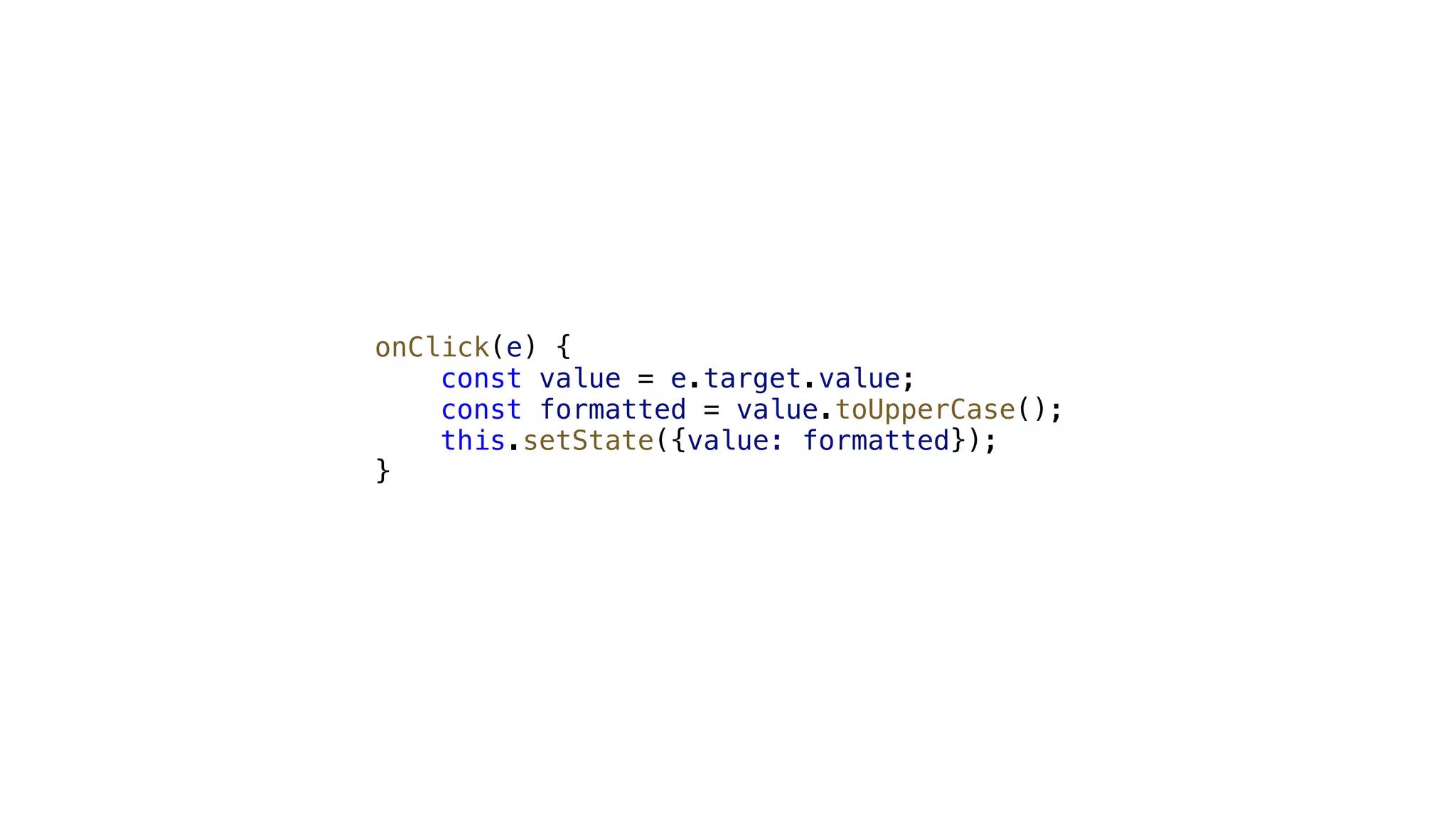

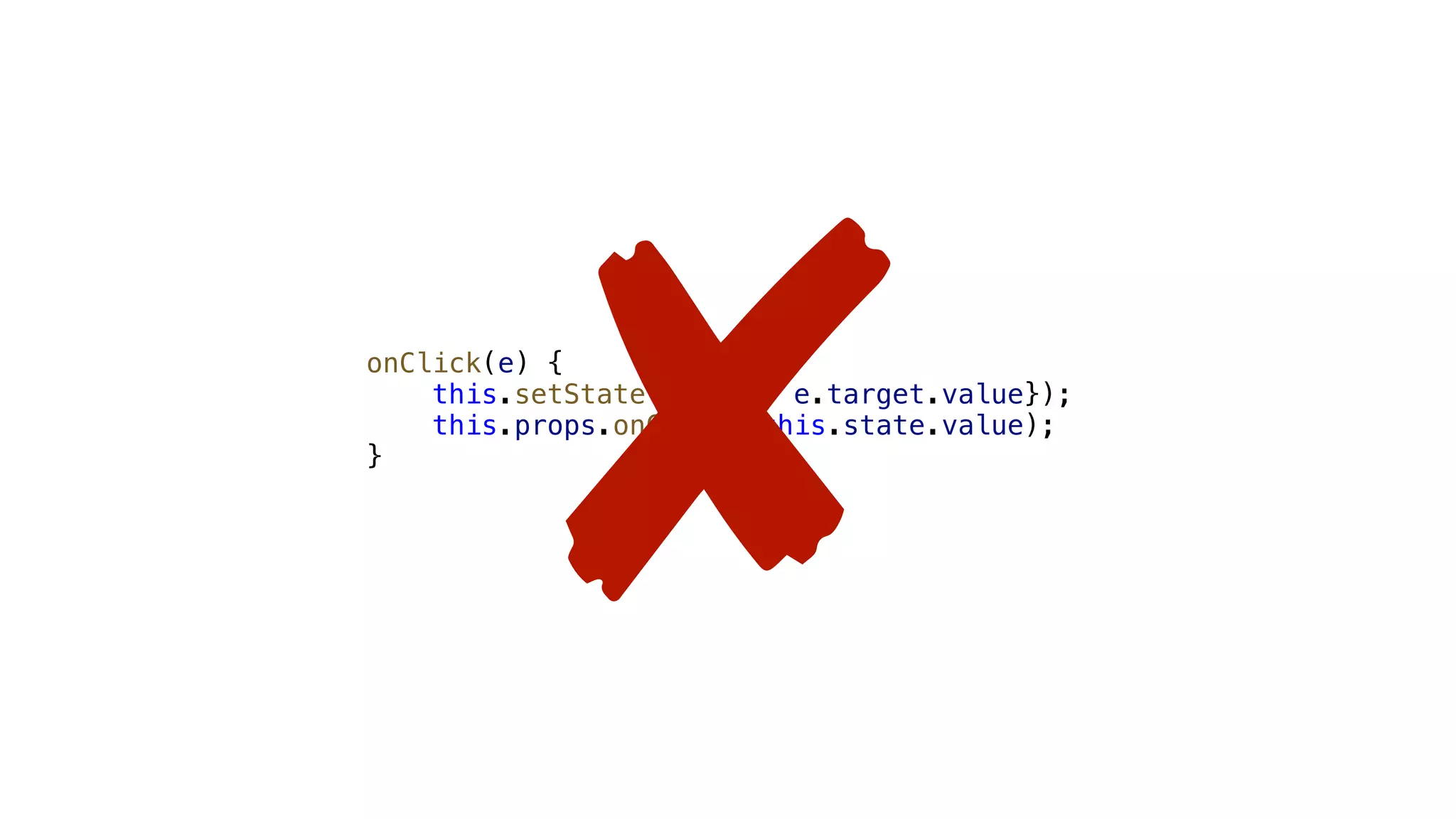
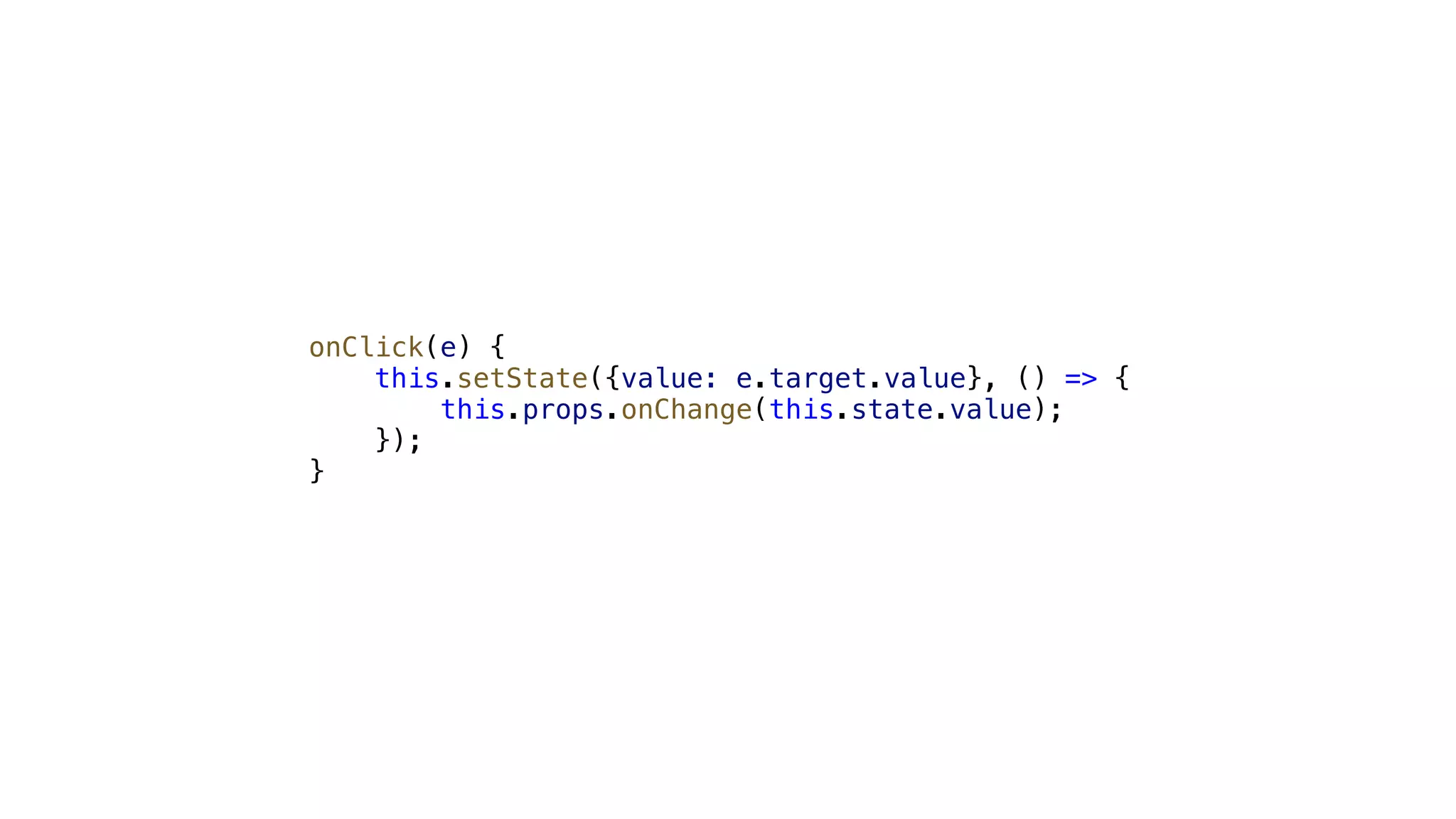
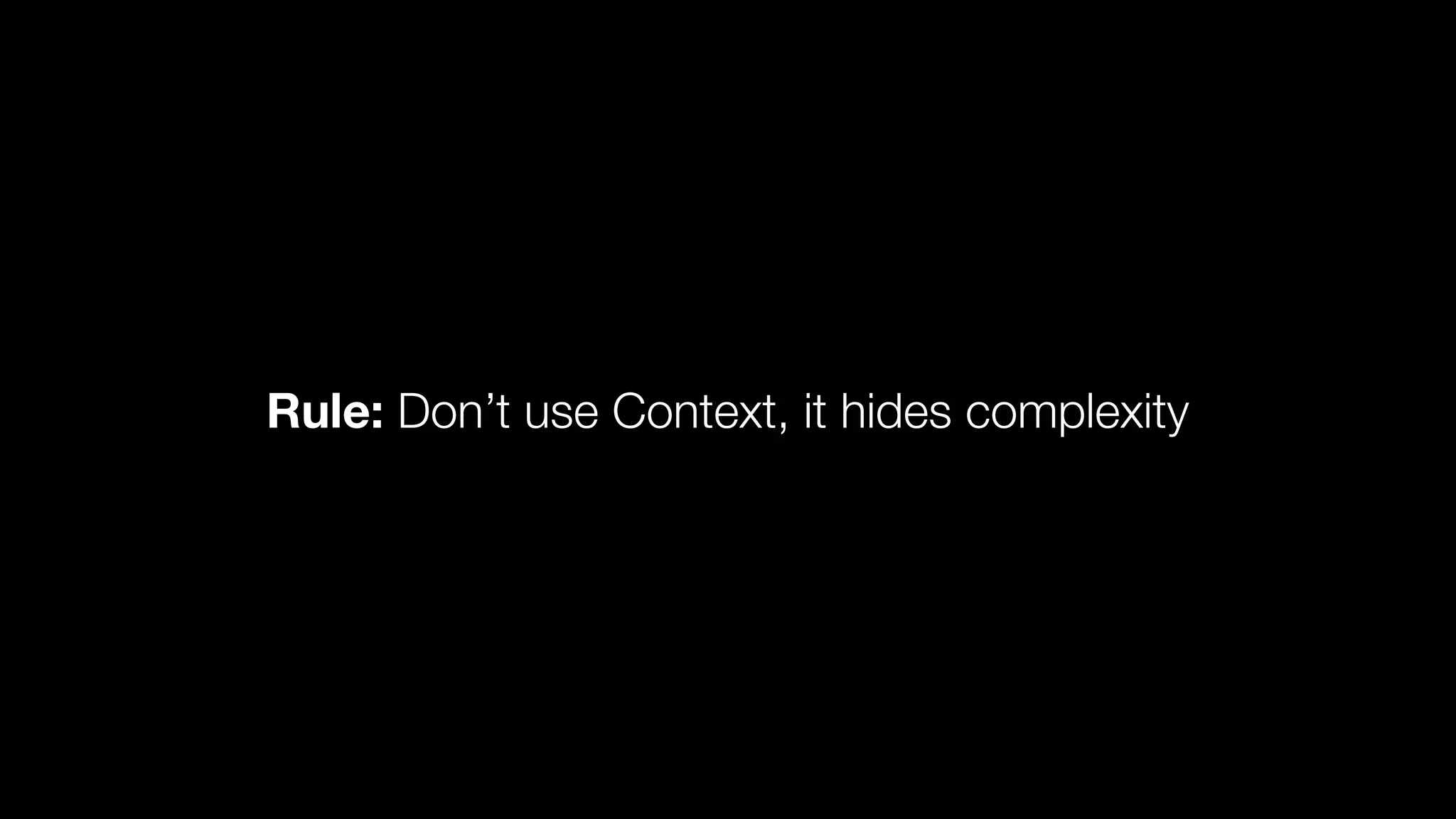

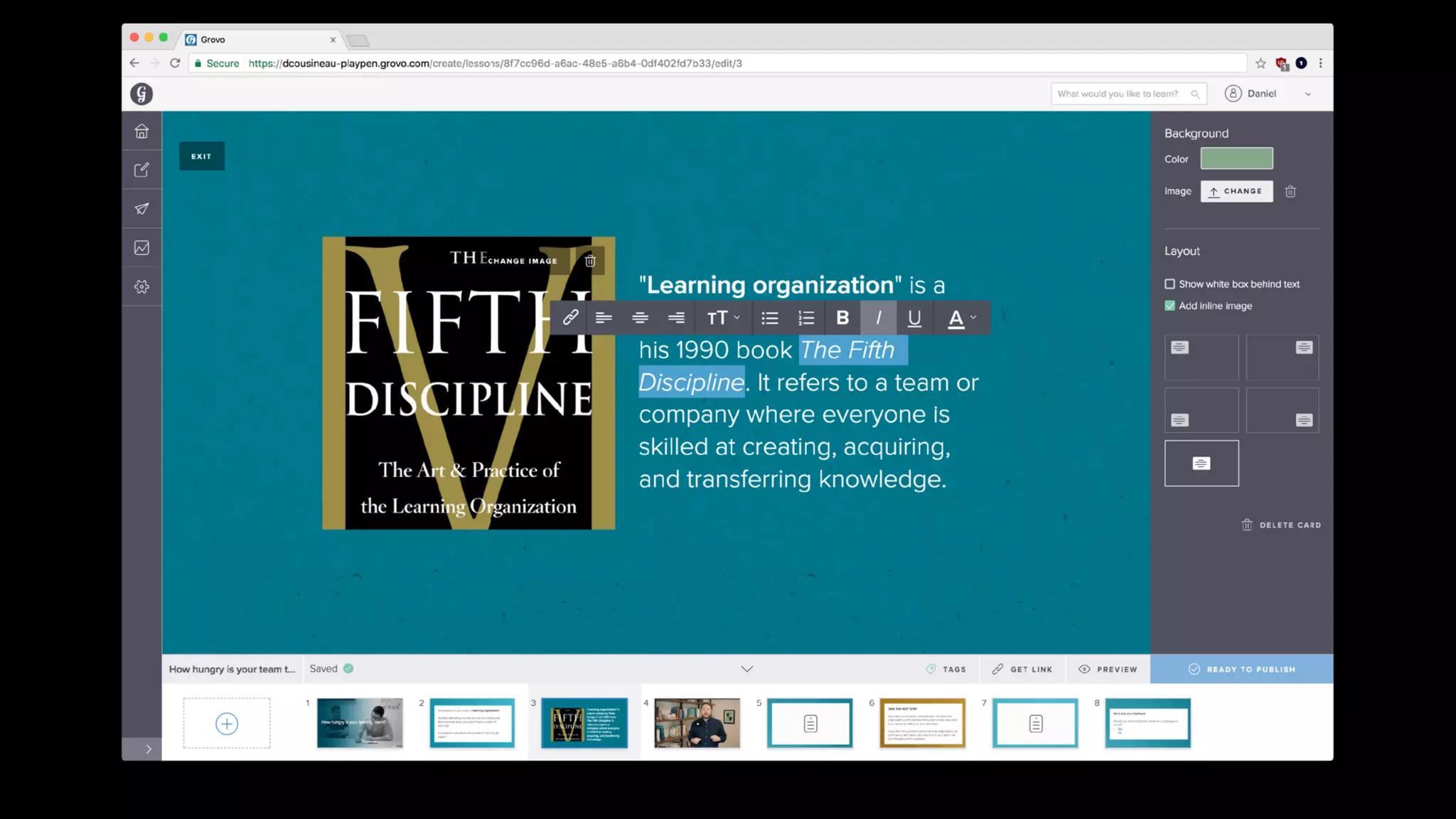




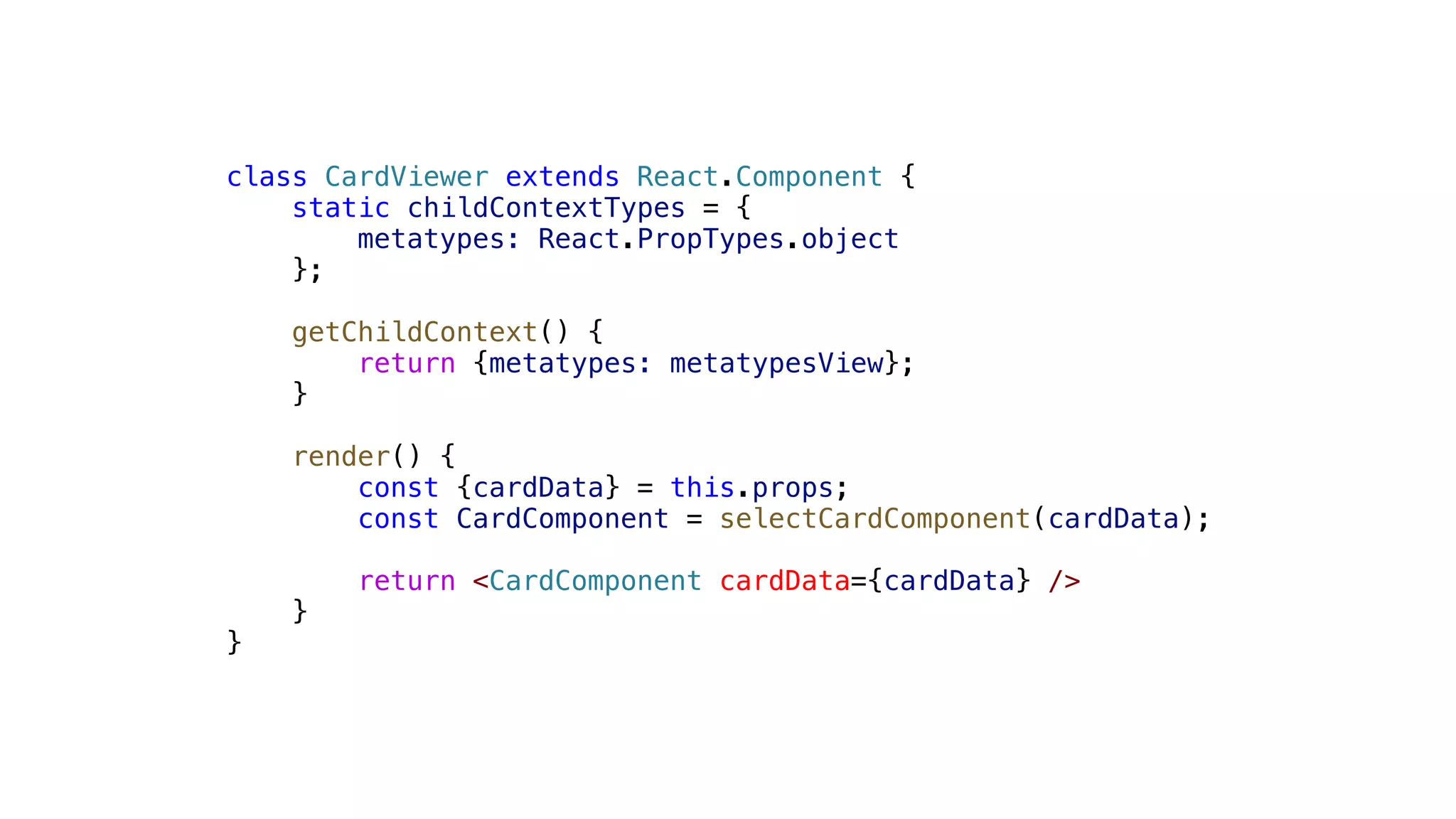




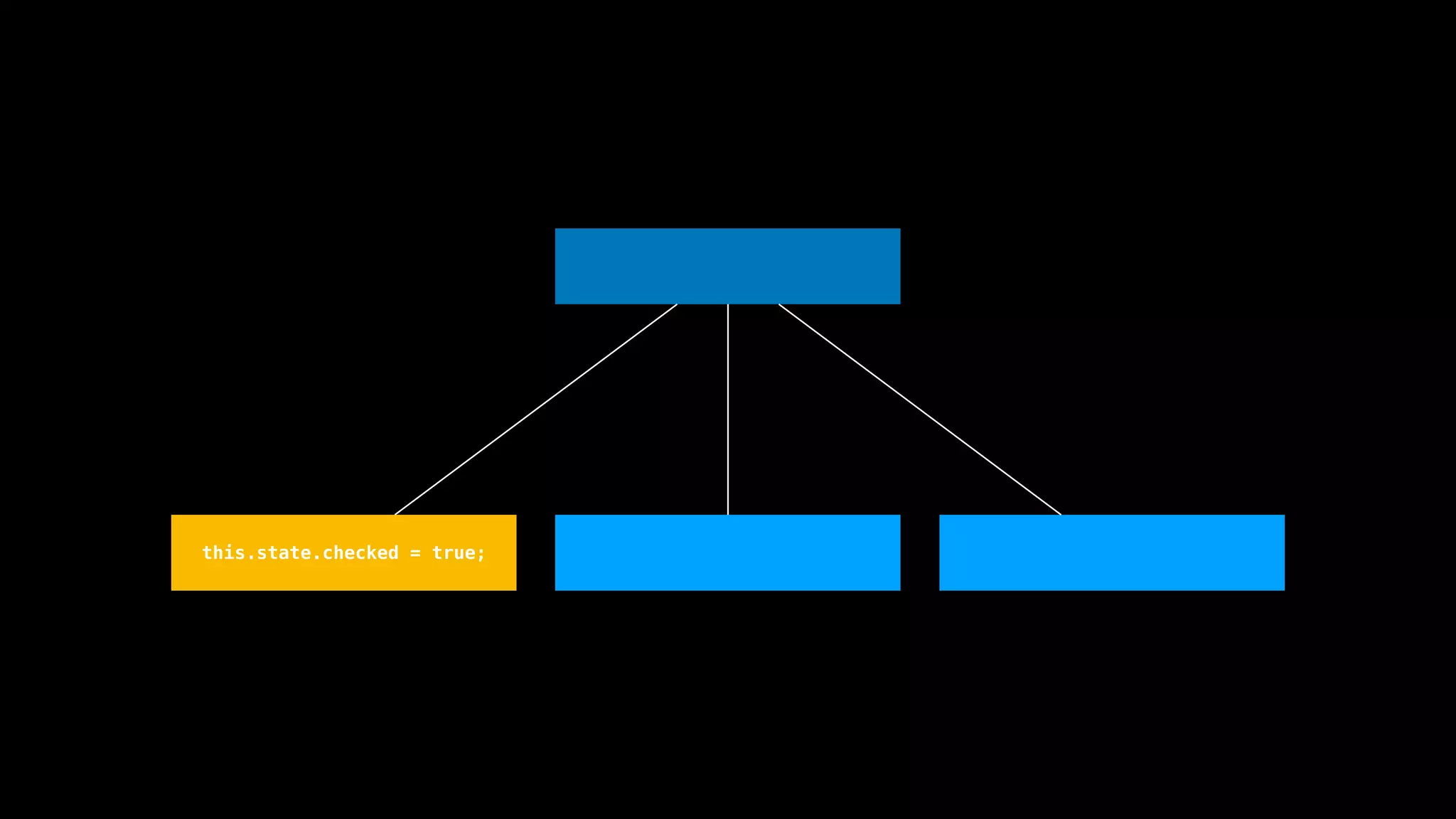
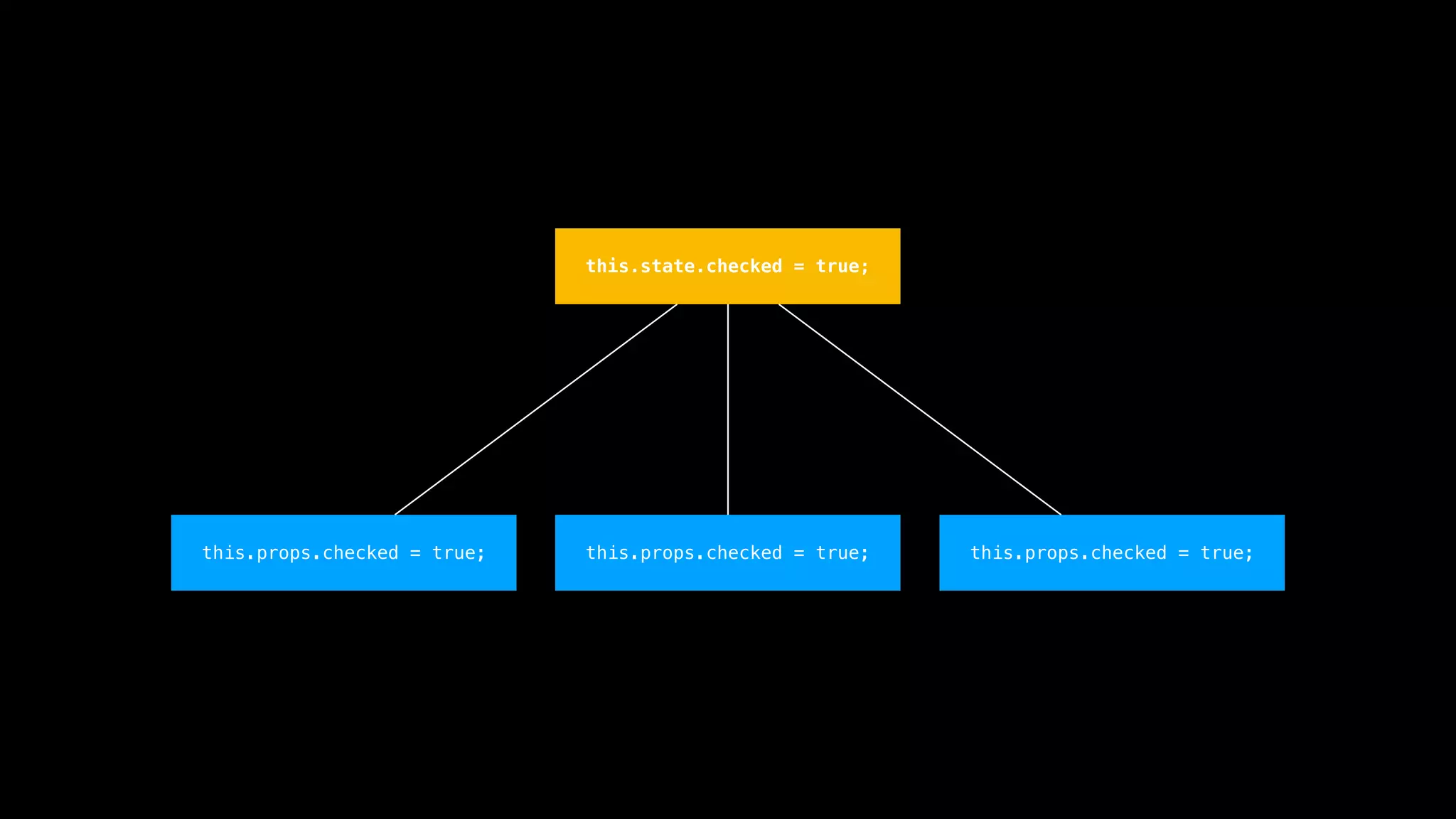




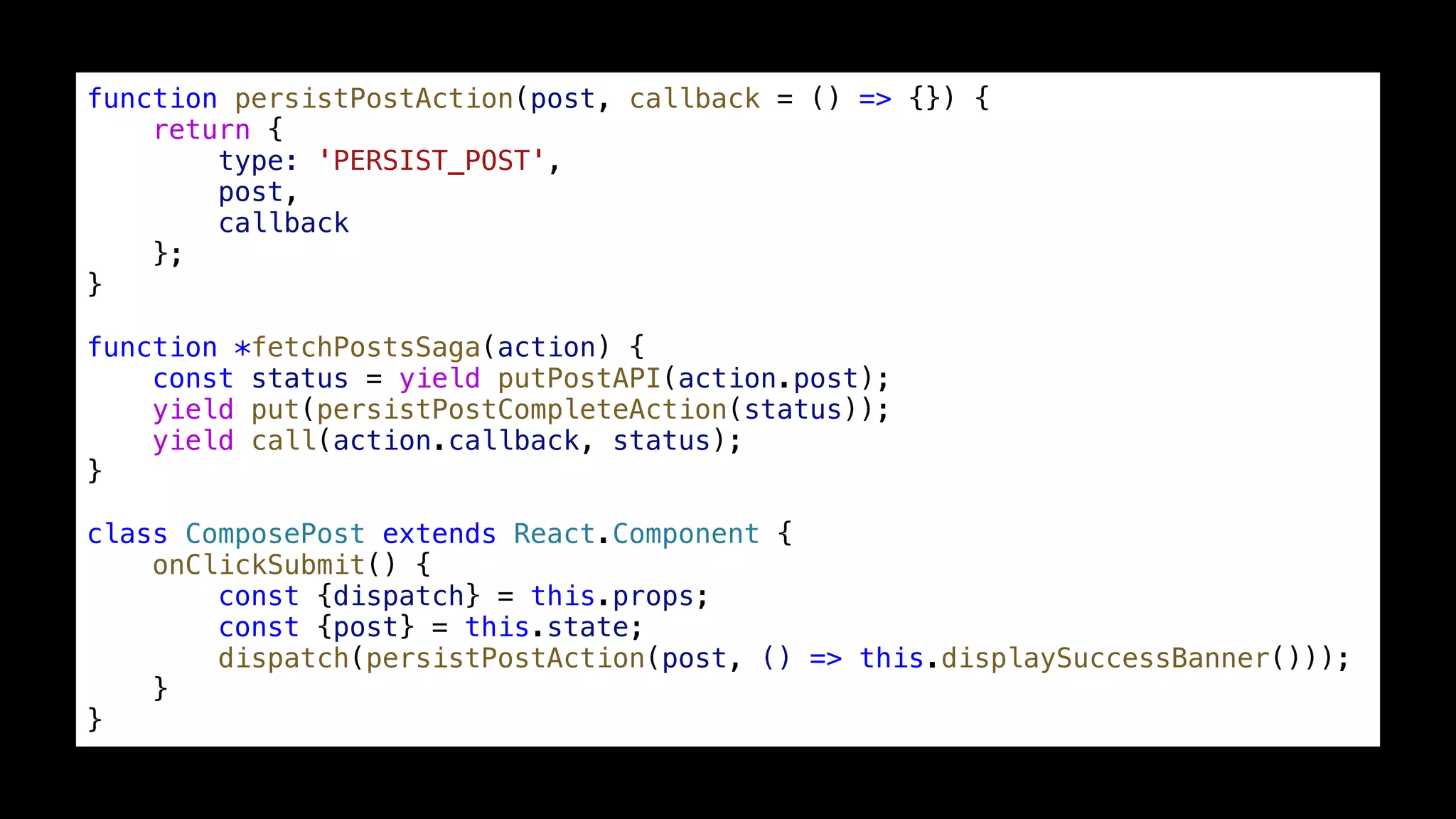
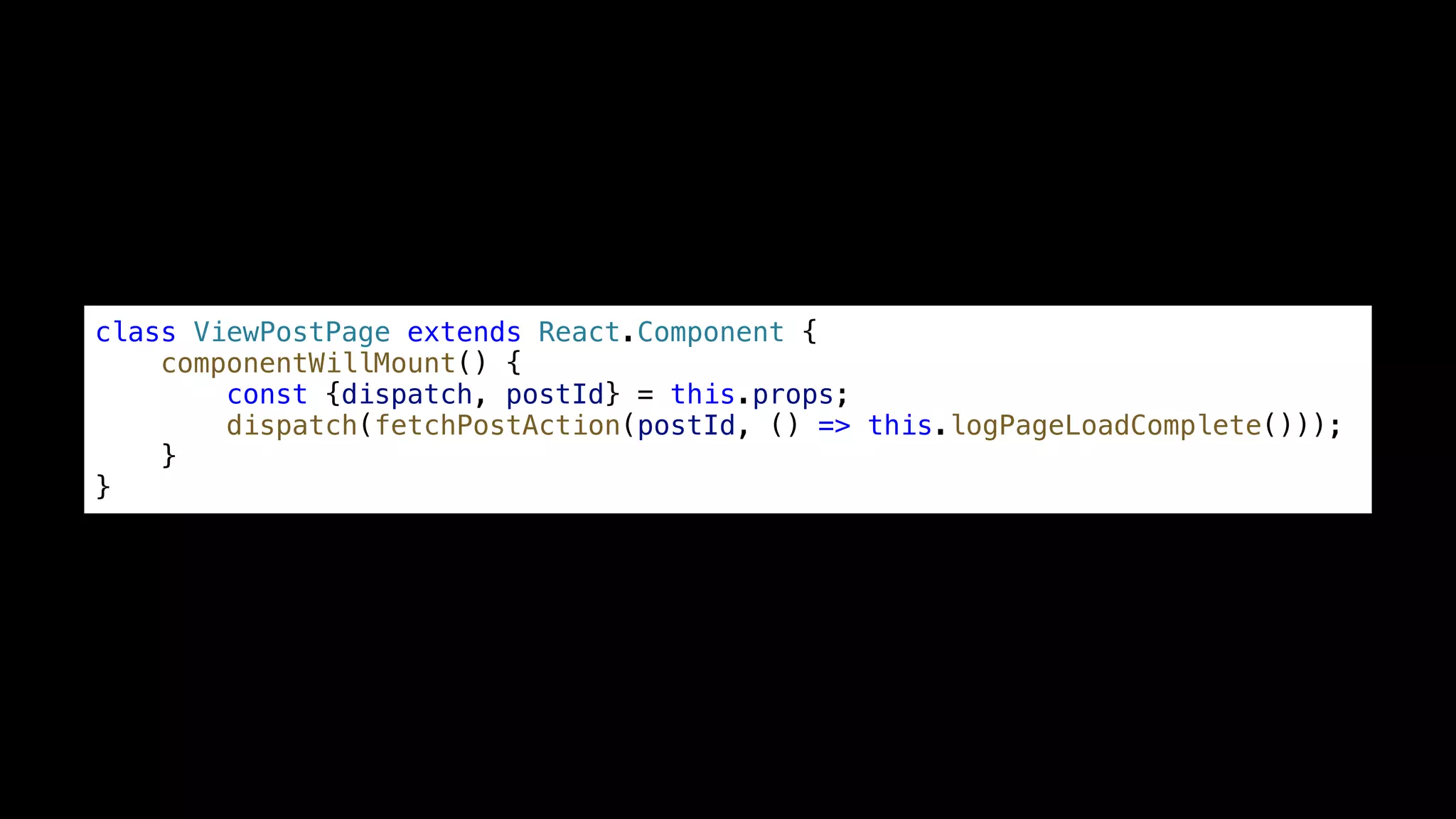



![{ byId: { ...entities }, keyWindows: [`${keyWindowName}`], [keyWindowName]: { ids: ['id0', ..., 'idN'], ...meta } }](https://image.slidesharecdn.com/untitled-170905152441/75/React-Redux-at-Scale-45-2048.jpg)
![{ byId: { 'a': userA, 'b': userB, 'c': userC, 'd': userD }, keyWindows: ['browseUsers', 'allManagers'], browseUsers: { ids: ['a', 'b', 'c'], isFetching: false, page: 1, totalPages: 10, next: '/users?page=2', last: '/users?page=10' }, allManagers: { ids: ['d', 'a'], isFetching: false } }](https://image.slidesharecdn.com/untitled-170905152441/75/React-Redux-at-Scale-46-2048.jpg)
![function selectUserById(store, userId) { return store.users.byId[userId]; } function selectUsersByKeyWindow(store, keyWindow) { return store.users[keyWindow].ids.map(userId => selectUserById(store, userId)); }](https://image.slidesharecdn.com/untitled-170905152441/75/React-Redux-at-Scale-47-2048.jpg)

![function reducer(state = defaultState, action) { switch(action.type) { case FETCH_USERS: return { ...state, keyWindows: uniq([...state.keyWindows, action.keyWindow]), [action.keyWindow]: { ...state[action.keyWindow], isFetching: true, query: action.query } }; case RECEIVE_ENTITIES: return { ...state, byId: { ...state.byId, ...action.entities.users.byId }, keyWindows: uniq([...state.keyWindows, action.keyWindow]), [action.keyWindow]: { ...state[action.keyWindow], isFetching: false, ids: action.entities.users.ids } }; } }](https://image.slidesharecdn.com/untitled-170905152441/75/React-Redux-at-Scale-49-2048.jpg)
![function reducer(state = defaultState, action) { switch(action.type) { case FETCH_USERS: return { ...state, keyWindows: uniq([...state.keyWindows, action.keyWindow]), [action.keyWindow]: { ...state[action.keyWindow], isFetching: true, query: action.query } }; case RECEIVE_ENTITIES: return { ...state, byId: { ...state.byId, ...action.entities.users.byId }, keyWindows: uniq([...state.keyWindows, action.keyWindow]), [action.keyWindow]: { ...state[action.keyWindow], isFetching: false, ids: action.entities.users.ids } }; } }](https://image.slidesharecdn.com/untitled-170905152441/75/React-Redux-at-Scale-50-2048.jpg)
![function selectUsersAreFetching(store, keyWindow) { return !!store.users[keyWindow].isFetching; } function selectManagersAreFetching(store) { return selectUsersAreFetching(store, 'allManagers'); }](https://image.slidesharecdn.com/untitled-170905152441/75/React-Redux-at-Scale-51-2048.jpg)
![function reducer(state = defaultState, action) { switch(action.type) { case UPDATE_USER: return { ...state, draftsById: { ...state.draftsById, [action.user.id]: action.user } }; case RECEIVE_ENTITIES: return { ...state, byId: { ...state.byId, ...action.entities.users.byId }, draftsById: { ...omit(state.draftsById, action.entities.users.byId) }, keyWindows: uniq([...state.keyWindows, action.keyWindow]), [action.keyWindow]: { ...state[action.keyWindow], isFetching: false, ids: action.entities.users.ids } }; } }](https://image.slidesharecdn.com/untitled-170905152441/75/React-Redux-at-Scale-52-2048.jpg)
![function reducer(state = defaultState, action) { switch(action.type) { case UPDATE_USER: return { ...state, draftsById: { ...state.draftsById, [action.user.id]: action.user } }; case RECEIVE_ENTITIES: return { ...state, byId: { ...state.byId, ...action.entities.users.byId }, draftsById: { ...omit(state.draftsById, action.entities.users.byId) }, keyWindows: uniq([...state.keyWindows, action.keyWindow]), [action.keyWindow]: { ...state[action.keyWindow], isFetching: false, ids: action.entities.users.ids } }; } }](https://image.slidesharecdn.com/untitled-170905152441/75/React-Redux-at-Scale-53-2048.jpg)
![function selectUserById(store, userId) { return store.users.draftsById[userId] || store.users.byId[userId]; }](https://image.slidesharecdn.com/untitled-170905152441/75/React-Redux-at-Scale-54-2048.jpg)
